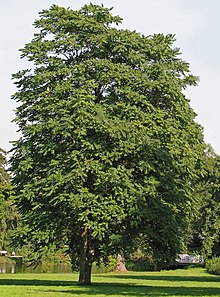Common Names: Tree-of-heaven,

Pollinator Forage forage,N,P
Nectar 0
Pollen 0
key name Copal Tree
Idententifing Character
Stem10 -20 m;
Leaves30 cm to 1 m long, subdevided into 11 -14 oblong, lanceolate or ovate, gland-baring leaflets. 7.5 to 11.5 cm long.
Flowers small, greenish in terminal paniles 10 - 20 cm, long
Fruit reddish-brown indihiscent winged called samara.
Taste
Odour
Root
Distribution Native to China naturalized to eastern North America
Medical Uses Dyusentery; Diarrhoea; Asthma; Epilepsy; Palpitations; Dueche in Gonorrheea and leucorrhoea;
Constituents Fixed ois, volitile oil. Gum; oleoresin; sugars; oxalic acid; possibly alkalois and glycocides.
Solvents
Dosage
administration
Formulas
Contra Indications Unpleasent cousing nausea and vomiting and debility, and no longer used
Chinese
Veterinary
Wild. Rapid growth resistance to pollution and desease easily grown from seed.
Harvest
Non Med
History Introduced to England in 1751 from Nanking China, United States in 1800, popular ornimental. Medicinal value discovred in France in 1859. Ainlanthus is from Indonesia fro Tree of heave. Not used for eather varnish or copal.